IN THE VAST CONCRETE LANDSCAPES of our cities, the presence, or lack thereof, of trees often reveals a deeper story that intertwines with issues of social justice and climate resilience. American Forests created a keystone tool to change this national narrative: Tree Equity Score, an application that assimilates an array of data sources and employs cutting-edge geospatial and statistical analyses. The tool provides a comprehensive assessment of tree canopy cover in specific neighborhoods, aligning it with critical factors such as income, race, health and climate. Since its creation in 2021, the Tree Equity Score has emerged as a beacon of insight and guidance for city officials, community activists and urban foresters alike.
Chris David, vice president of GIS and data science at American Forests, heads the team responsible for creating the Tree Equity Score tool. With an unwavering commitment to leveraging data and technology, David and his accomplished team have not only pioneered the development of the groundbreaking Tree Equity Score tool, but this past summer they ushered in its next generation. With critical updates and expanded coverage, this innovative tool continues to be a catalyst for transforming how we perceive and tackle equitable tree distribution in our urban environments.
In the following interview, Brittany Washington, director of urban forestry communications at American Forests, interviewed David on Tree Equity Score 2.0.
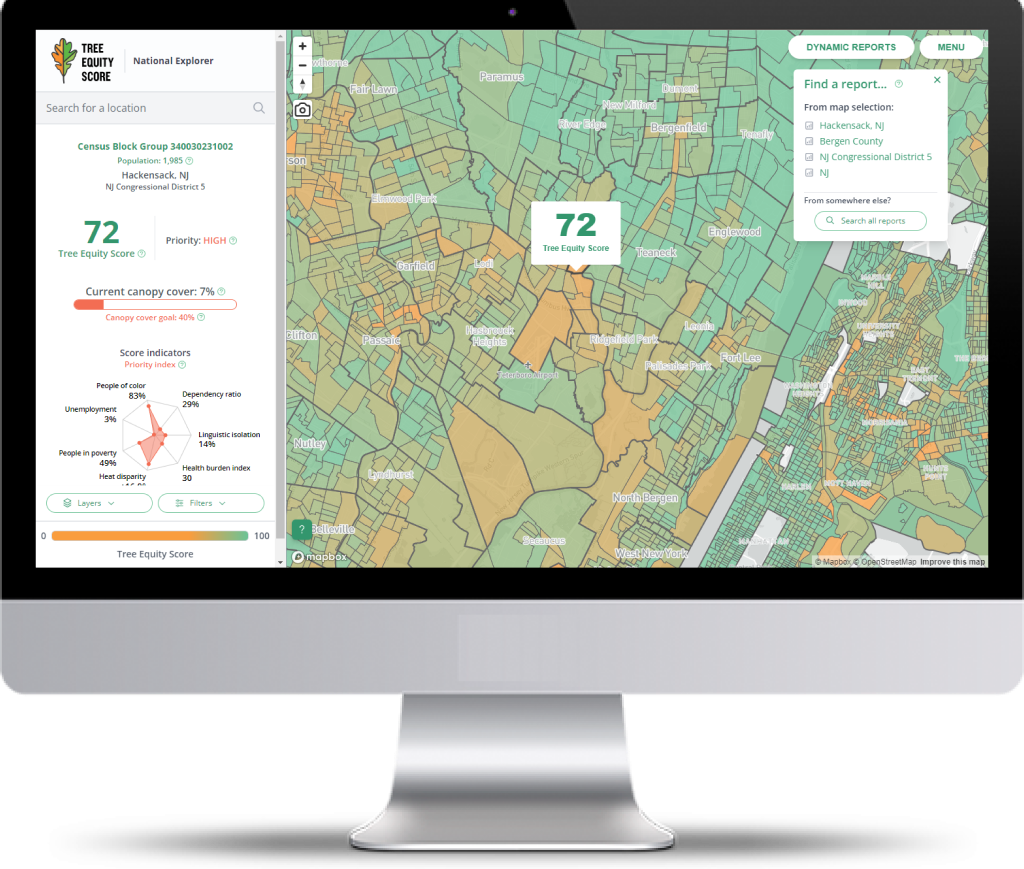
Q: Tree Equity Score 2.0 includes new features and improvements. Could you elaborate on some of these updates and how they enhance the user experience and the tool’s effectiveness?
A: “Every improvement we’ve made for this release was informed by feedback from users (or prospective users) of our tools. We heard from community groups in smaller cities that they had next-to-no resources to get started on the road to Tree Equity. So, we expanded our coverage to smaller urban areas through our partnership with Google. We now have coverage for every urban area in the United States. We heard from urban nonprofits that for them to take full advantage of Tree Equity Score, they needed to be able to compare and prioritize neighborhoods across municipal boundaries. So, we fine-tuned our methods to ensure that was possible. We heard from people in grassland cities like Austin or cities in Southern California caught between desert and forest climates that the biome targets outlined in Tree Equity Score didn’t quite align with their tree canopy goals. So, we researched the problem and made some data-driven adjustments to the way we set those targets. We heard that some of our most powerful features, like dynamic reporting, got lost in the tool interface. So, we made them more accessible. We also added a new help widget to ensure people know the features of the tool and can get their questions answered quickly within the app. I’ve also yet to meet someone who knows their 13-digit Census Block Group ID. So, we added an address search to the map search bar making it easier than ever to navigate around the map and identify the score for neighborhoods that are important to you! Most critically, we’ve updated all of the data in the tool. A tool is only as good as the data in it, and we have the most up-to-date and authoritative information out there, utilizing boundaries and demographic information from the most recent census, incredibly accurate AI-derived tree canopy data from Google’s Environmental Insights Explorer, and new and improved estimates on heat disparity utilizing Landsat satellite imagery from 2022.”
Q: As the Tree Equity Score continues to expand its coverage, including smaller urban centers, how do you ensure that these communities receive the necessary resources and support to achieve their Tree Equity goals?
A: “American Forests is a national nonprofit, so we can’t be everywhere at once. But we can do our best to help level the playing field. That starts with making the powerful information in Tree Equity Score available to any urban area, large or small. This is a critical part of our mission to democratize data nationwide for Tree Equity.
Q: Why is it important to calculate urban tree canopy using a Tree Equity framework? What advantages does this approach offer?
A: “At American Forests, we believe everyone has the right to the life sustaining benefits of trees, the right to Tree Equity. But, if you live in a low-income community or a community of color, chances are, your access to those benefits have been limited — one of the many generational legacies of institutional racism including Redlining. With the release of Tree Equity Score 2.0, we’ve been exploring more deeply the impact these disparities have on people.
Neighborhoods with the fewest residents of color have four times more tree cover per person than neighborhoods with the most residents of color. Neighborhoods with the lowest poverty rates have double the tree cover per person compared to neighborhoods with the highest poverty rates.
These stats frame the problem and set the framework for a solution. But Tree Equity Score goes a step further, incorporating measures estimating where the urban heat island is most impactful, and where there might be more people at risk, such as seniors, children and people with existing conditions. Yes, we need to plant more trees in cities, but if we don’t plant in the right places to have the most impact and right the wrongs of the past, we’re exacerbating these issues. Tree Equity Score points people to the right places.”
Q: The Tree Equity Score relies on data from various sources, such as the U.S. Census and remote sensing technologies. How do you navigate the challenges of data availability and quality to ensure accurate and reliable results?
A: “We’re always at the mercy of data availability, but in many ways, I feel like we are at the beginning of a new golden age of data accessibility. Whether it’s accessing Landsat satellite imagery to estimate the urban heat island or exploring the U.S. Census data portal to download demographic priority measures, there is so much information at our fingertips. And the real game changer is the advancement in machine learning models to derive new insights from mountains of sensor, satellite and other data sources. The fact that we now have access to tree canopy data at the resolution and accuracy that we have through our partnership with Google was unimaginable even five years ago. There’s so much more to come, and we’re well positioned to take advantage of it. We see Tree Equity Score as a tool to make some of this data more accessible and impactful for the Tree Equity movement, and we’ll continue to be on the lookout for the latest, most accurate and innovative data.”
Q: Data accessibility and literacy are essential for maximizing the impact of the Tree Equity Score. How does American Forests support and promote data literacy among individuals and organizations interested in utilizing the tool?
A: “It’s important to note that people can’t use data if they don’t have access to it. Nor can they use it, even if they have access, when they don’t have the tools and support to understand it. Tree Equity Score democratizes data for Tree Equity by making this critical data available to the public — data that is either generally not available (tree canopy data, for example) or is difficult to access or process (heat disparity) — and then packaging that data in a platform that is focused on the user experience. Visitors to the Tree Equity Score platform do not need a computer science or statistics degree to engage with the data. It’s easy to understand. At its core, Tree Equity Score’s success now, and in the future, will be driven by how well we address the needs of all users. We’re off to a good start, but we’re going to keep working at it.”
Q: Have the Tree Equity Score findings led to shifts in urban planning strategies or policies? How can the score inform long-term urban planning decisions for sustained Tree Equity? Can you share examples of how individuals or community groups have used the score to mobilize and advocate for their tree-planting needs?
A: “We hope so! We’re starting to collect more information on how the tool is being used now, but we have some great examples of ways Tree Equity Score is starting to impact decision-making. In our initial pilot location of Rhode Island, community nonprofits, like Groundwork Rhode Island and the Providence Neighborhood Planting Partnership, and state agencies, like the Rhode Island Departments of Health and Environmental Management are using Tree Equity Score not only to drive investment to the right places, but also to generate more funding for planting in low Tree Equity Score neighborhoods. We’re also partnering on city- and state-wide policy initiatives in Phoenix and Washington State where formal commitments to Tree Equity have been made to direct urban forestry investment into low Tree Equity Score neighborhoods.”
Q: Tree planting initiatives often face resource limitations. How does American Forests work to ensure that communities with lower Tree Equity Scores receive adequate funding and resources to address their specific tree planting needs using the Tree Equity Score?
A: “We have a lot of work to do to get all the way there, but as an organization we’re doing our part. Our urban tree planting partners and grantees are required to plant in low Tree Equity Score areas. We impose the same requirements on ourselves, regardless of the opportunity. It’s also important to mention the role American Forests played in delivering the unprecedented investment in urban forestry through the recent Inflation Reduction Act of 2022. In particular, Joel Pannell, vice president of urban forest policy, was the lead advocate in cultivating congressional champions who prioritized Tree Equity and urban forestry funding in the inflation reduction act, coalescing support from mayors and NGO partners.”
The faces behind the technology
Q: Tell us about the team you work with at American Forests. What are their roles and areas of expertise?
A: “In my view, being a part of a team that shares your values is one of the most rewarding things a person can have in their career. I’m lucky to be in the thick of that right now with our team of geospatial data and application experts. I’m so proud to work with this group. Our team has grown right along with American Forests over the more than four years I’ve been here. We went from a GIS and Data Science team of one, to the still small, but mighty team we are today. I do my best to foster a culture of teamwork, personal growth and accountability. We support each other, and we celebrate each other authentically. Everyone knows they have an advocate in me, and I know I can count on them when I need them. And we are all committed to the mission of American Forests and of Tree Equity.”
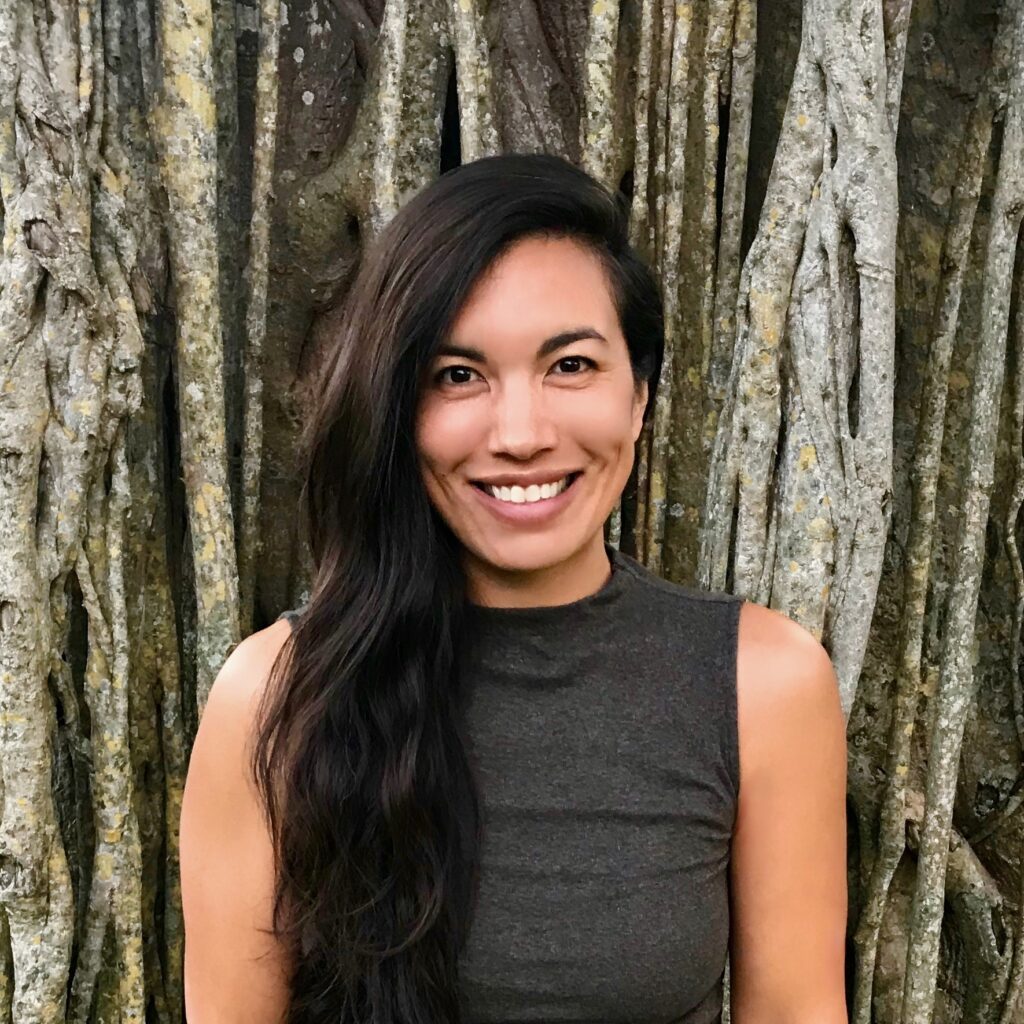

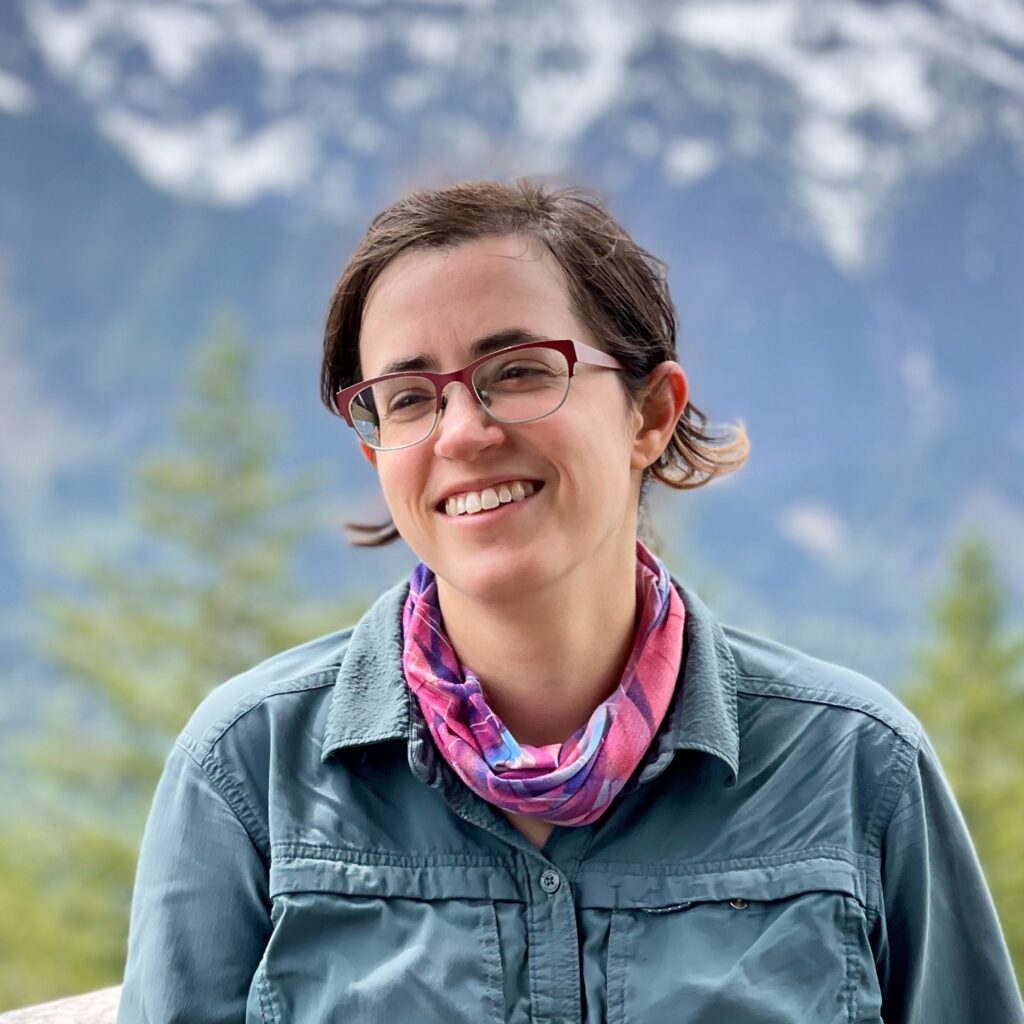
Julia Twichell,
director of data design & UX
Mushtaaq Ali,
senior manager of GIS & data science
Geri Rosenberg,
senior manager of geospatial development & analysis

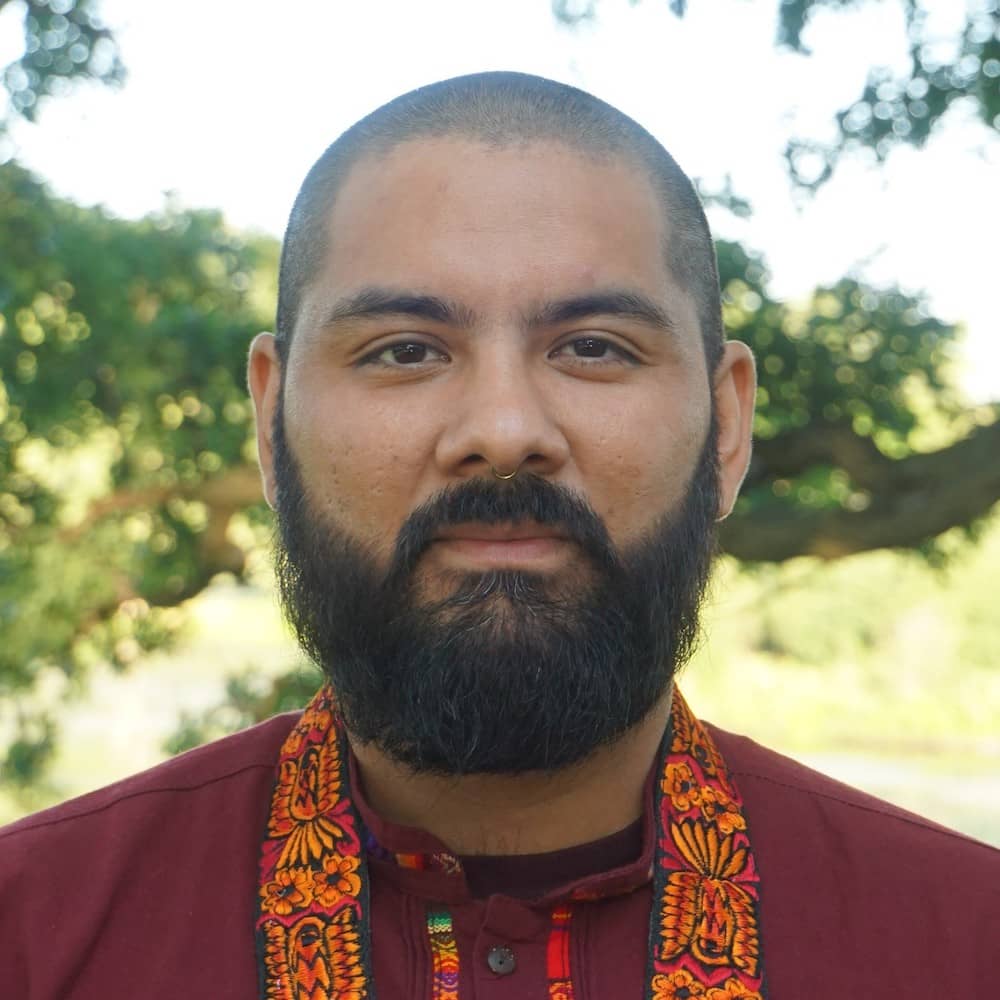
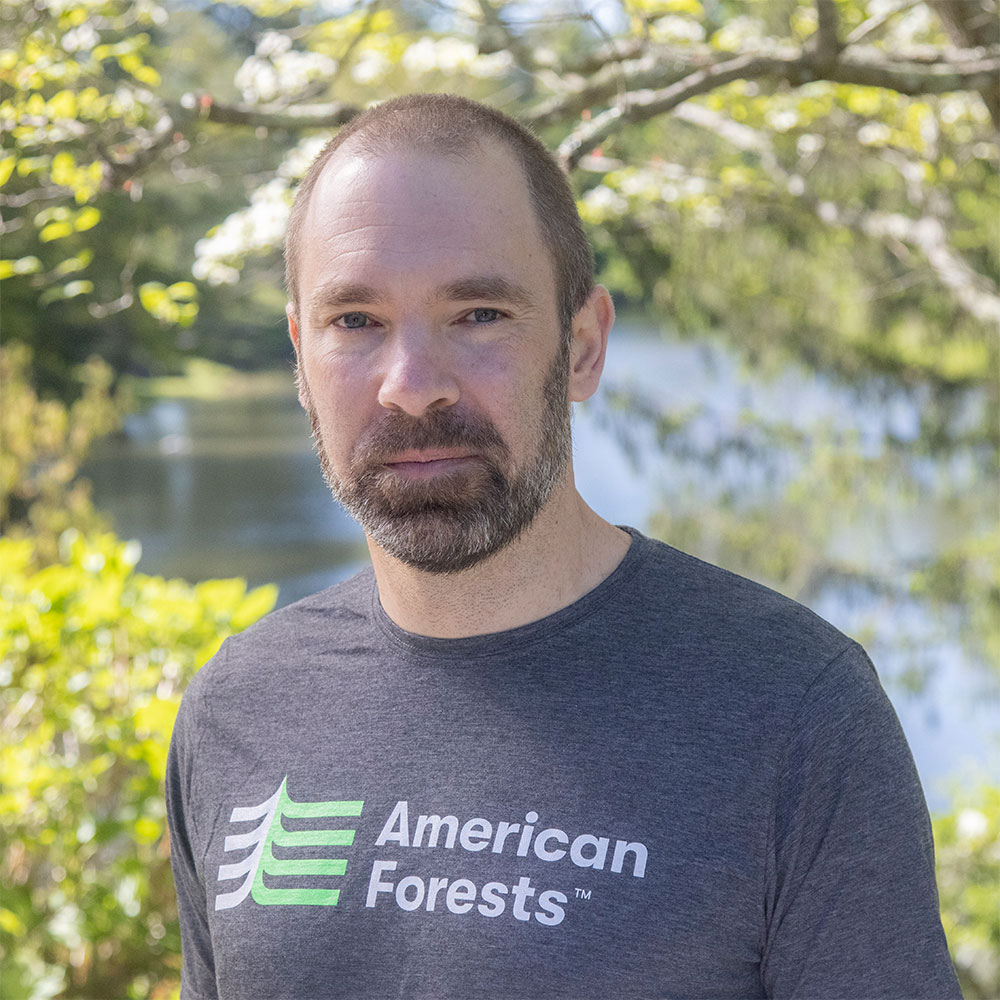
Chase Dawson,
software & data engineer
Refugio Mariscal,
GIS analyst
Chris David,
vice president of GIS & data science
“Julia Twichell is a world class cartographer and data designer, but stopping there sells her way too short. She’s a data storyteller, a skilled and insightful analyst, and a part-time web developer as well. She leads all data design for the organization and spearheaded the redesign for Tree Equity Score 2.0. I think of Mushtaaq Ali as our lead problem solver. She’ll make sense of broken models or messy code and improve the result in the process. She is the author of our Tree Equity Score scripting models — the secret sauce that makes Tree Equity Score work — and is adapting it for the United Kingdom. Geri Rosenberg does a little bit of everything for us. She leads analysis for many of our Tree Equity Score Analyzers across the country, especially the biggest most challenging ones, collaborates on the Tree Equity Score data pipeline, builds dynamic web pages for our Tree Equity Score site, or even architects our cloud GIS infrastructure. She’s up for it all. Over the last year, Chase Dawson has led a complete overhaul of the entire Tree Equity Score site — an incredible achievement. Finally, Refugio Mariscal is the lead analyst for several of our upcoming Tree Equity Score Analyzers. He’s our web and mobile GIS expert, working with American Forests staff to develop data collection tools and simple web-mapping applications for ArcGIS Online.”
What’s next
Q: How do you see this tool evolving in the coming years, and what impact do you hope it will have on urban forestry and equitable resource allocation?
A: “We have so many plans for the Tree Equity Score platform! We’re going to continue improving the Tree Equity Score National Explorer application, responding to the needs of users and incorporating new and improved advancements in data. We’re kicking off an effort to fully optimize the mobile version of our site and to create a Spanish language version of the Tree Equity Score platform as well, bringing more people into the Tree Equity movement and continuing our mission to get this data into the hands of any person interested in taking action for Tree Equity. We’re continuing to help cities dig deeper with the Tree Equity Score Analyzer — our deep-dive tool co-created with local communities. We have six currently under development in Phoenix, Detroit, Dallas, Austin, Houston, Indianapolis and Columbus, with many more on the horizon. The Tree Equity Score UK Explorer — built on the framework of our National Explorer, but customized to the needs identified in the U.K. — is scheduled to be released at the end of November, and we’re exploring the potential of further international expansion. We also are about to get started on an exciting new application to visualize and compare Tree Equity data that we’re planning to release in the spring — the Tree Equity Data Dashboard was conceptualized in response to user requests for more ways to slice and dice the Tree Equity data and compare across regions, cities, states and more. Finally, we’re working with our Urban Forestry team to build out the Tree Equity Support Center — a resource for nonprofits, government agencies and community advocates who want to take the next steps towards achieving Tree Equity in their communities. After people learn about their score, our Tree Equity Score Support Center aims to help guide users in their efforts to put their Tree Equity Score(s) into action, through policy and planning solutions, advocacy, fundraising and more.”
To learn more about Tree Equity Score, watch the short documentary, “Mapping the Path to Tree Equity.”